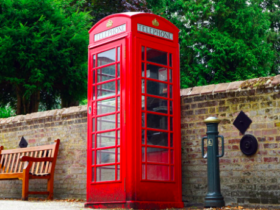Going on an exciting road trip is a truly liberating experience. Unfortunately, not all of us can afford to buy a new vehicle to facilitate this cross-country holiday venture, so if you’re going to hit the highways, it is tremendously important to ensure that the ride will be able to really take the heat. With this in mind, here’s a quick vehicle checklist to make your job easier.
Bear in mind that going on a road trip in an obviously outdated, dilapidated vehicle is never a good idea, and the following actions will hardly make one such car good to go. If you lack funds for a brand new vehicle for this trip, you can always lease one or score a really good deal at car auctions.
Once you’ve made sure your car is up to the task, have the vehicle’s oil and filter changed with the change of seasons, and check the car’s other fluids, including radiator coolant and brake, transmission and power steering fluid, topping them off as necessary or changing them to the manufacturer’s recommendations.

Inspect the battery and see to it that the cable connections are tight and the terminals are free from corrosion. If you notice a white powder at the contacts, clean them off using a wire brush. If the battery is old, you should consider getting a new one as a preventive measure.
Examine your engine’s drive belts for fraying or cracks. If worn, have them replaced or have this done regularly at 50,000-mile intervals. Likewise, check hoses for loose clamps, leaks and cracks. Give them a nice squeeze and replace those that seem brittle or feel spongy.
Visually inspect your vehicle’s tyres for uneven and/or excessive tread wear and suspected cracks or cuts in the sidewall. If you detect uneven tread wear, this usually means that the front end is misaligned, one (or more) suspension components are worn out or the tyres are improperly inflated. Tyres are commonly manufactured with warning bars which appear in the grooves of the tyres when they have 2/32″ of tyre tread remaining; if you see these, have the tyres replaced.

Keep the tyres properly inflated to the manufacturer’s recommendations, checking them regularly via a quality air pressure gauge. A tyre’s air pressure can fluctuate by a couple of pounds for every ten degrees of temperature change. Car’s handling and fuel economy can be seriously affected by under-inflation, while over-inflation may cause uneven wear and consequently a blowout.
Check power steering, transmission and brake fluid levels, topping off when necessary. Have the engine’s fuel and air filters changed in accordance with the manufacturer’s service interval or as otherwise required, and also check out belts and hoses to ensure they are not cracked or frayed.
Finally, you should replace the windshield wipers, as they tend to take a considerable beating from road grit, snow and ice over the course of a long, harsh winter. And remember to refill the windshield washing fluid and keep an extra bottle of it in the trunk.
























